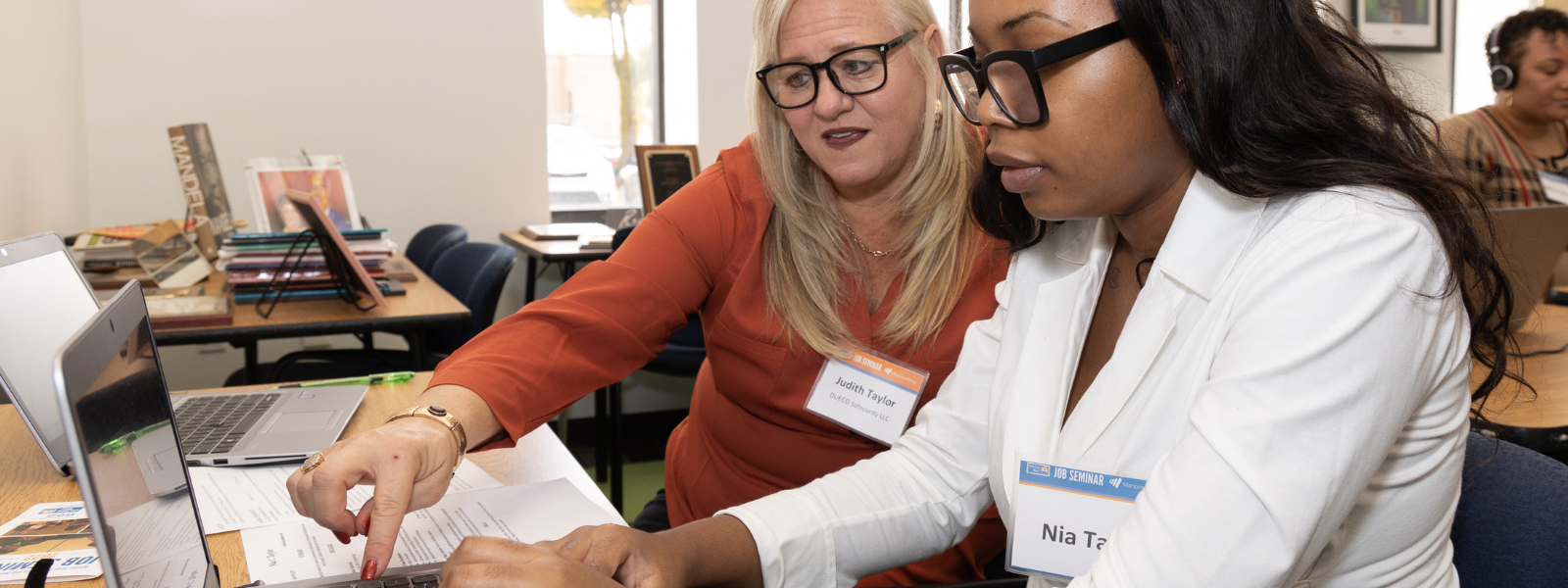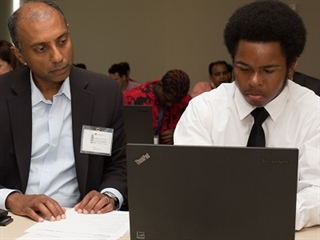Community Conversations: Affordable Broadband

January 12, 2023
What would you do without access to your smartphone, computer, or even reliable internet?
There was a time when many communities didn’t have electricity, running water, or roads. We look back now and wonder how people managed! We rely on broadband for our homes these days the way we rely on electricity, water, gas, and sewer services. It’s a widely agreed-upon necessity of life.
But imagine modern life without it. How would your kids easily do their research for school, for you to check a flight status, search for jobs, or read up on the latest celebrity news? Most of us take for granted that we have the internet, internet-capable devices, and easy access to broadband. Yet for many, it’s not as easily attainable.
If we looked at the technical details, then nearly everyone in Greater Milwaukee and Waukesha County has “access” to broadband, meaning they live near infrastructure capable of delivering internet service. However, broadband access isn’t equally distributed because the service itself can often be unaffordable for households. “Affordability,” moreover, isn’t part of the government definition of “access.”
It should be.
United Way of Greater Milwaukee & Waukesha County’s Techquity initiative pursues digital equity and inclusion for all via four strategies: Broadband, Devices, Skills, and Advocacy. In our community, which includes Milwaukee, Waukesha, southern Ozaukee, and southern Washington counties, we’re striving to ensure that every resident has access to affordable broadband, internet-capable devices, and digital skills and literacy resources.
When the pandemic started, it was abundantly clear how important these resources were. The crisis brought to light how many in our community faced a broadband affordability disparity due to their income, race, or even their neighborhood. We knew that, among other things, the pandemic created a technology emergency. People in underserved communities were unable to search for jobs, book telehealth appointments, or continue their child’s education in virtual classrooms. Yet even with access to these digital resources, some people didn’t have the digital skills and literacy to use the digital tools effectively. The digital divide was growing.
The digital divide is the gap between the portion of the population who do have access to computers and the internet, including the necessary skills and literacy for their use, and those who do not. Techquity bridges the digital divide by providing these critical technology resources to those that need it most.
Techquity isn’t just about hardware, though. It supports community-led investments in digital equity access, skill-based volunteer experiences, technology training, and policy and system changes. To further support these investments, Techquity convened an Advisory Council in early 2021, which consists of local volunteer leaders who contribute their perspective and experience on our community’s most pressing challenges related to digital access, equity, and inclusion. Members of this council work to advance Techquity’s ongoing projects and programs, each of which are tied to one of Techquity’s core strategies.
Recently, Techquity and INPOWER led two Community Conversations regarding affordable broadband. If you have ever had an issue accessing or keeping quality, affordable internet, or if you have ideas on how your internet experience can be better, we want to hear from you in future conversations! The only way to make change is to hear the voice of the people that the problem impacts!
United Way of Greater Milwaukee & Waukesha County wants to extend our sincerest thank you to everyone who participated in our first two Community Conversations. We also thank INPOWER for their support in making these events happen.
Pictured at top: 2022-23 Co-Chair Judie Taylor helps a community member with her resume; at right: a Milwaukee resident receives digital help.
Interested in supporting Techquity?
Click here to donate.
For more updates on Techquity and other United Way initiatives, follow us on Facebook, Twitter, Instagram, and LinkedIN.

Have something to say? LEAVE A COMMENT:
Your email address will not be published. All fields Required.
United Way of Greater Milwaukee & Waukehsa County blog and social media presence is designed as a source for information, sharing and collaboration about United Way and health and human service related topics. As part of our commitment to our readers, we expect all posters to abide by the following rules:
• Posts and comments should be on topic, conversational, and serve to educate or entertain
• Posts and comments may not be unlawful, fraudulent, threatening, libelous, defamatory, discriminatory, harassing, obscene or otherwise rude or in poor taste
• Posts and comments may not be used for any commercial purpose or otherwise to promote any outside organization or its activities
United Way of Greater Milwaukee & Waukesha County reserves the right, at our discretion, to remove any post or to revoke a user’s privilege to post to our page. Comments found to be in conflict with the guidelines above will be removed promptly.
Comments are not necessarily those of United Way of Greater Milwaukee & Waukesha County and its employees and we do not guarantee the accuracy of these posts.